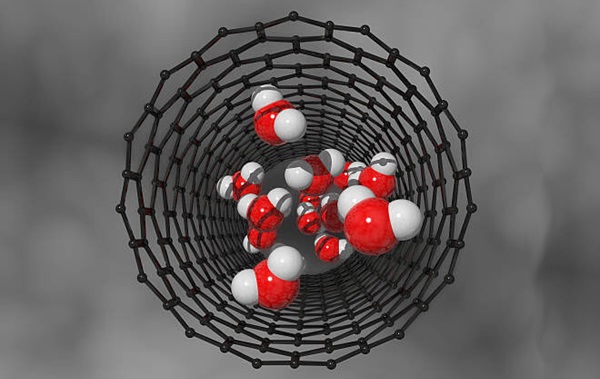Music Education with Artificial Intelligence for Inclusive and Sustainable Early Childhood Learning
Downloads
This study aims to evaluate the impact of a didactic strategy that incorporates generative artificial intelligence (AI) into music education, supporting oral language development in preschool children and promoting inclusive and sustainable early childhood learning. Using an action-research approach, a mixed-methods design was applied to assess the performance of 15 children aged 3 to 6 years, divided into experimental and control groups. The experimental group participated in AI-supported activities using tools such as Genially, Educaplay, and Wordwall, whereas the control group employed traditional methods. Quantitative data from pre-and post-tests, as well as qualitative observations, revealed that AI-enhanced sessions improved motivation, pronunciation, and engagement, particularly among children aged 5 and 6 years old. Although statistical tests showed no significant differences between groups, the intervention demonstrated pedagogical effectiveness by increasing interest and participation. The novelty of this work lies in applying generative AI in early music education to personalize learning and reduce inequality, aligning with several Sustainable Development Goals (SDGs 3, 4, 9, and 10). The findings offer valuable insights into designing inclusive educational experiences through the integration of ICT and AI, highlighting the need to enhance teacher training in emerging digital pedagogies and promote accessible music-based learning in diverse educational settings.
Downloads
[1] Anum, A., Susanti, R., & Syakur, A. (2024). Indonesian Language Acquisition of 0-2-Year-Old Children: A Study of Psycholinguistic Perspective. Journal Corner of Education, Linguistics, and Literature, 3(3), 296-308. doi:10.54012/jcell.v3i3.274.
[2] Storsve, G. (2024). Formal, informal, and non-formal learning as analytic categories for research in music education. International Journal of Music Education, 02557614241250035. doi:10.1177/02557614241250035.
[3] Förster, A., & Schnell, N. (2024). Designing accessible digital musical instruments for special educational needs schools—A social-ecological design framework. International Journal of Child-Computer Interaction, 41, 100666. doi:10.1016/j.ijcci.2024.100666.
[4] Sandrina, M. (2021). Fostering Meaningful and Creative Connections in Higher Education: Contributions from Music Education. European Scientific Journal, 17(26), 27. doi:10.19044/esj.2021.v17n26p27.
[5] Pérez-Jorge, D., González-Herrera, A. I., Alonso-Rodríguez, I., & Rodríguez-Jiménez, M. del C. (2024). Challenges and Opportunities in Inclusive Education with ICT: Teachers’ Perspectives in the Canary Islands during the COVID-19 Pandemic. Education Sciences, 14(3), 283. doi:10.3390/educsci14030283.
[6] Sun, Y., Chen, J., & Sundar, S. S. (2024). Chatbot ads with a human touch: A test of anthropomorphism, interactivity, and narrativity. Journal of Business Research, 172, 114403. doi:10.1016/j.jbusres.2023.114403.
[7] Calandri, E., Mastrokoukou, S., Marchisio, C., Monchietto, A., & Graziano, F. (2025). Teacher Emotional Competence for Inclusive Education: A Systematic Review. Behavioral Sciences, 15(3), 359. doi:10.3390/bs15030359.
[8] Dobrota, S., & Sodina, D. (2025). The Role of Musical Activities in the Overall Development of Preschool Children — The Perspective of Preschool Teachers. Nova Prisutnost, 23(1), 141–153. doi:10.31192/np.23.1.9.
[9] Bedoya Leiva, O. F., & Figueroa-Polanco, P. A. (2025). Revisión sistemática de programas de entrenamiento cognitivo basados en IA: algoritmos, poblaciones y dominios cognitivos estimulados. Revista EIA, 22(43), 1800. doi:10.24050/reia.v22i43.1800.
[10] Ma, Y., & Wang, C. (2025). Empowering music education with technology: a bibliometric perspective. Humanities and Social Sciences Communications, 12(1), 1–14. doi:10.1057/s41599-025-04616-2.
[11] Xiong, Z. (2025). Exploring the potential and challenges of applying multiple intelligences theory in Chinese music education. Teaching and Teacher Education, 160, 105031. doi:10.1016/j.tate.2025.105031.
[12] Veloso, A. L., & Foletto, C. (2025). Introducing a Sound-based Music Education in early childhood: the role of sonic and musical tools in the development of teleomusicality. Music Education Research, 27(1), 54–72. doi:10.1080/14613808.2024.2447239.
[13] Ghafar, Z. N., Neamat, K. B., & Sidiq, S. W. (2025). The Impact of Experience, Motivation, and Technology on EFL Teachers' Creativity. Journal of Digital Learning and Distance Education, 3(8), 1199-1210.
[14] Dan, X. (2025). Social robot assisted music course based on speech sensing and deep learning algorithms. Entertainment Computing, 52, 100814. doi:10.1016/j.entcom.2024.100814.
[15] Cheng, L. (2025). The impact of generative AI on school music education: Challenges and recommendations. Arts Education Policy Review, 126(4), 255–262. doi:10.1080/10632913.2025.2451373.
[16] Gustafsson, A., Öberg, C., & Shams, P. (2025). Enhancing the Phygital Customer Experience in the Digital World. Service Innovation and Management: Digitalization, Service Infusion and Customer Experience, 113–126. doi:10.1007/978-3-031-76560-5_9.
[17] Yin, L., & Guo, R. (2025). An Artificial Intelligence-Based Interactive Learning Environment for Music Education in China: Traditional Chinese Music and Its Contemporary Development as a Way to Increase Cultural Capital. European Journal of Education, 60(1), 12858. doi:10.1111/ejed.12858.
[18] Mulenga, R., & Shilongo, H. (2024). Hybrid and Blended Learning Models: Innovations, Challenges, and Future Directions in Education. Acta Pedagogia Asiana, 4(1), 1–13. doi:10.53623/apga.v4i1.495.
[19] Lapsomboonkamol, S., Songkram, N., Thamsuwan, P., & Songkram, N. (2022). The Mediating Effect of Knowledge Integration on the Relationship between Capability and Innovative Behaviour. Emerging Science Journal, 6(special issue), 92–107. doi:10.28991/esj-2022-sied-07.
[20] Embarek-Hernández, M., Güeita-Rodríguez, J., & Molina-Rueda, F. (2022). Multisensory stimulation to promote feeding and psychomotor development in preterm infants: A systematic review. Pediatrics and Neonatology, 63(5), 452–461. doi:10.1016/j.pedneo.2022.07.001.
[21] Nitin, R., Gustavson, D. E., Aaron, A. S., Boorom, O. A., Bush, C. T., Wiens, N., Vaughan, C., Persici, V., Blain, S. D., Soman, U., Hambrick, D. Z., Camarata, S. M., McAuley, J. D., & Gordon, R. L. (2023). Exploring individual differences in musical rhythm and grammar skills in school-aged children with typically developing language. Scientific Reports, 13(1), 2201. doi:10.1038/s41598-022-21902-0.
[22] Mayer-Benarous, H., Benarous, X., Vonthron, F., & Cohen, D. (2021). Music Therapy for Children With Autistic Spectrum Disorder and/or Other Neurodevelopmental Disorders: A Systematic Review. Frontiers in Psychiatry, 12, 643234. doi:10.3389/fpsyt.2021.643234.
[23] Acosta-Vargas, P., Salvador-Acosta, B., Novillo-Villegas, S., Sarantis, D., & Salvador-Ullauri, L. (2024). Generative Artificial Intelligence and Web Accessibility: Towards an Inclusive and Sustainable Future. Emerging Science Journal, 8(4), 1602–1621. doi:10.28991/ESJ-2024-08-04-021.
[24] Ruiz-Rojas, L. I., Acosta-Vargas, P., De-Moreta-Llovet, J., & Gonzalez-Rodriguez, M. (2023). Empowering Education with Generative Artificial Intelligence Tools: Approach with an Instructional Design Matrix. Sustainability (Switzerland), 15(15), 11524. doi:10.3390/su151511524.
[25] Fotaris, P., Mastoras, T., & Lameras, P. (2023). Designing Educational Escape Rooms With Generative AI: A Framework and ChatGPT Prompt Engineering Guide. Proceedings of the European Conference on Games-based Learning, 180–189. doi:10.34190/ecgbl.17.1.1870.
[26] Ngoan, P. T., & Duc, N. M. (2024). An investigation on the application of Kahoot, Quizziz, Blooket & Educaplay in grammatical Instruction. Global Journal of Arts Humanity and Social Sciences, 4(9), 714-724. doi:10.5281/zenodo.13839333.
[27] Talamini, F., Blain, S., Ginzburg, J., Houix, O., Bouchet, P., Grassi, M., Tillmann, B., & Caclin, A. (2022). Auditory and visual short-term memory: influence of material type, contour, and musical expertise. Psychological Research, 86(2), 421–442. doi:10.1007/s00426-021-01519-0.
[28] Li, Q., Li, Z., & Han, J. (2021). A hybrid learning pedagogy for surmounting the challenges of the COVID-19 pandemic in the performing arts education. Education and Information Technologies, 26(6), 7635–7655. doi:10.1007/s10639-021-10612-1.
[29] Kong, X. (2025). Deep Learning in Music Generation: A Comprehensive Investigation of Models, Challenges and Future Directions. ITM Web of Conferences, 70, 04027. doi:10.1051/itmconf/20257004027.
[30] Acosta-Vargas, Patricia; Chacón-Castro, Marcos; Roldan-Cardona, Margarita ; Jadán-Guerrero, J. (2025). (Dataset) Music Learning with AI for Inclusive Early Educatio. Mendeley Data, V1. doi:10.17632/z5kryrzdt3.1.
[31] Ayeni, O. O., Al Hamad, N. M., Chisom, O. N., Osawaru, B., & Adewusi, O. E. (2024). AI in education: A review of personalized learning and educational technology. GSC Advanced Research and Reviews, 18(2), 261-271. doi:10.30574/gscarr.2024.18.2.0062.
[32] Barenboim, G., Debbio, L. Del, Hirn, J., & Sanz, V. (2024). Exploring how a generative AI interprets music. Neural Computing and Applications, 36(27), 17007–17022. doi:10.1007/s00521-024-09956-9.
[33] Jiang, W., Han, B., & Cui, Y. (2025). Influence of music educators on students’ involvement in learning the theory of musical art. Acta Psychologica, 253(104722). doi:10.1016/j.actpsy.2025.104722.
[34] Çela, E., Vedishchev, A., Fonkam, M., Eappen, P., Potluri, R. M., & Vajjhala, N. R. (2025). Integrating Generative AI in Education: Themes, Challenges, and Future Directions. Generative Artificial Intelligence: Exploring the Power and Potential of Generative AI, 149–167. doi:10.1007/978-3-031-76710-4_8.
[35] Rana, S., & Chicone, R. (2025). Gamification and Immersive Learning with AI. In Fortifying the Future. Springer, Cham, Switzerland. doi:10.1007/978-3-031-81780-9_3.
[36] Förster, A., & Schnell, N. (2025). Accessible guitar playing: Exploring participatory design of digital musical instruments in a special educational needs school. International Journal of Human Computer Studies, 196, 103435. doi:10.1016/j.ijhcs.2024.103435.
- This work (including HTML and PDF Files) is licensed under a Creative Commons Attribution 4.0 International License.



















